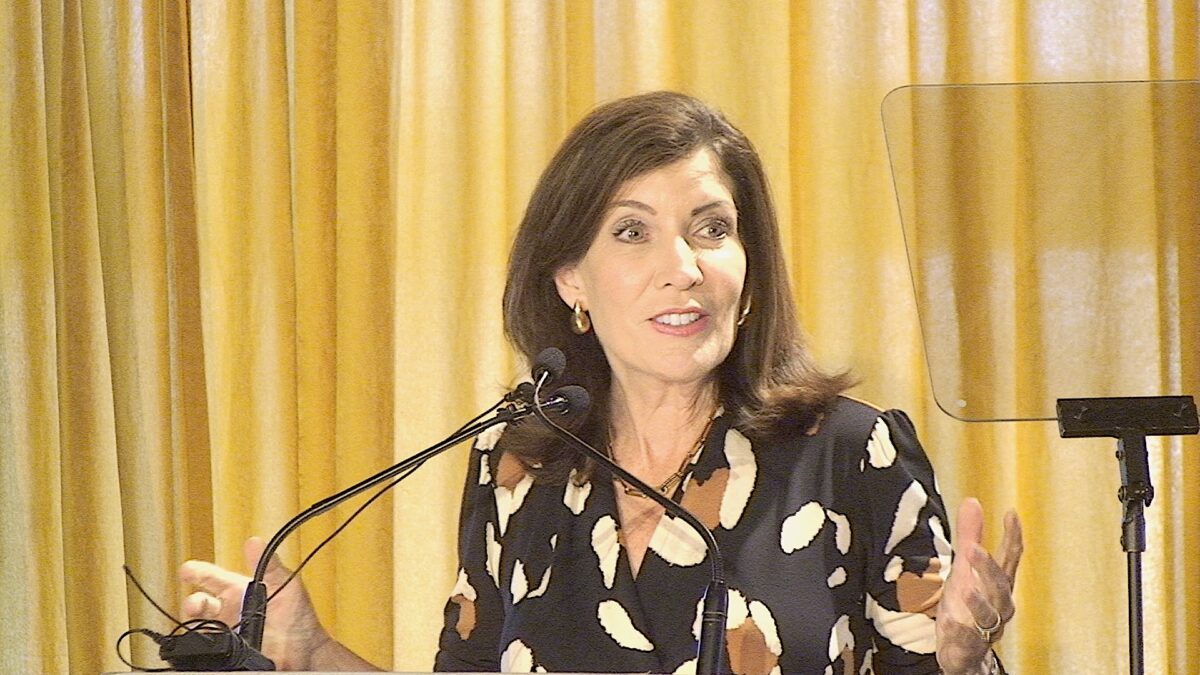In revealing his first budget proposal, Gov. Dannel P. Malloy emphasized jobs as the primary determinant of spending decisions ”“ even as residents and business sized up tax increases Malloy wants that could factor in any decision to expand here.
In his budget, Malloy said businesses will bear less than 20 percent of his proposed increases ”“ most notably a plan to replace Connecticut”™s current three-bracket income tax with a seven-bracket system that would raise taxes for households making more than $100,000.
As the case with the 2009 “millionaire”™s tax” on couples making $1 million, the tax hikes would also hit small businesses that file their taxes using individual forms ”“ Malloy did not state whether he factored that into his 20 percent calculation on the impact of new taxes on businesses.
The lowest paid workers in the state, by contrast, could qualify for a new 30 percent earned income tax credit that could save them $1,500 in taxes annually.
Corporations would also pay an additional two years of a 10 percent surcharge on their income taxes, a bump that was due to have expired after the end of the current 2011 fiscal year that ends this June.
Malloy justified the increases on two grounds ”“ the fiscal realities facing Connecticut and the need for short-term “shared sacrifice” as the state rebuilds both its decimated finances and its economic infrastructure.
“Without jobs, government”™s resources will dry up, its programs will become exhausted and the relief they provide will be temporary, to no lasting effect,” Malloy said in a speech to the Connecticut General Assembly in mid-February. “Jobs ”¦ represent the light at the end of the budget tunnel. That”™s why job creation drives this budget. The reorganizations and restructurings we announced ”¦ were done in part to help make state agencies and the people who work in them more responsive to the needs of the business community.”
Even as he promised a budget free of “gimmickry” to hide structural problems, Malloy led off his budget address by proposing yet another gimmick to draw companies to relocate to Connecticut from elsewhere ”“ a new “first five” program which would offer incentives for the first handful of companies to accept a package of incentives to each create at least 200 jobs in the state.
“This program takes our best job creation tools, like the reinvestment tax credit, the manufacturing assistance act and the job creation tax credit, and allows them to be combined and the benefits increased for companies that bring more than 200 new jobs to the state,” Malloy said. “We will hold these ”˜first five”™ to their commitments with mechanisms to ensure that the jobs and investment we support will last. To these first companies that commit to creating hundreds of new jobs, Connecticut says, ”˜Welcome, let”™s get to work.”™”
Against that vow, businesses considering a Connecticut expansion will need to consider higher taxes that will hit the pocketbooks of their mid-level employees ”“ as well as other added costs, such as a quarter-percentage point hike in the sales tax to 6.25 percent. According to studies cited by the Connecticut Business and Industry Association, companies account for about 44 percent of all sales taxes collected in the state.
Malloy”™s budget also includes a 3 percent “luxury tax” on cars worth at least $50,000, boats valued at $100,000, jewelry worth $5,000 and clothes costing $1,000.
This base budget for the fiscal 2012 year beginning this June totals $18.3 billion, an amount that includes $327 million in spending needed to secure additional federal revenue. Excluding that amount, the base state budget totals $17.9 billion, a mere $3 million below the current year”™s base budget.
Among several vows, Malloy said the state will not introduce cuts that place additional burdens on municipalities, which could force them to raise property taxes. He vowed not to borrow to pay for operating expenses and will meet its obligations in several areas, including contributions to the pension system and paying off debt incurred to make ends meet in prior budgets.
Malloy has no intention of meeting past obligations to state employees, however, saying they must accept $1 billion less in benefits in each of the next two years they had won in previous contracts ”“ benefits that helped the state recruit workers who might have taken jobs elsewhere had they known what their ultimate earning power would amount to in the employ of the state.
“He laid a good foundation to begin the process of getting the state”™s fiscal house in order,” said Joe Brennan, senior vice president of public policy for the Connecticut Business and Industry Association. “The concern in the business community is if we are going to grow our economy out of this problem, we don”™t want to overtax either businesses or individuals ”¦ The governor did not have a lot of time between the election and ”¦ putting this budget together. Now we”™ve got until June, until the (legislative) session ends, to try to improve upon it and reduce those tax increases as much as possible.”
At least one other group of businesses bristled at a tax they deem unfair ”“ power generators, which are being hit with a new tax of a penny for each five kilowatts of electricity generated in Connecticut.
“The tax will cause Connecticut electric rates to rise by at least $60 million,” said Angela O”™Connor, president of the New England Power Generators Association Inc., in a prepared statement. “The new cost of doing business will cause the state”™s plants to run less, leading to lower income tax and property tax revenue, and not even coming close to producing $58 million in new revenues.”


















